Integrating colour theory into your landscape design is a great way to elevate your outdoor spaces. It creates a sense of structure, cohesion, and harmony that evolves with your space over time, transforming even the simplest garden into a work of art. By understanding and applying the principles of colour theory, homeowners can create places that are not only beautiful but also evoke specific moods and atmospheres.
Want to learn more about how we use colour theory in our landscape designs? Let’s jump into some of the core principles we use to create show-stopping landscapes here in Edmonton!
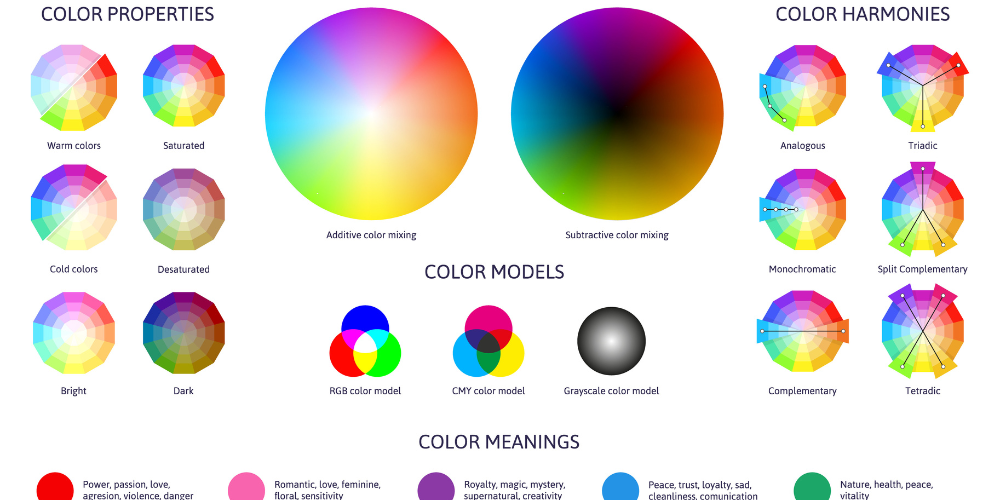
Understanding Colour Theory
Colours are used in much the same way, regardless of the type of space you’re designing: primary colours (red, blue, yellow) form foundations, secondary colours (green, orange, purple) are created by mixing primary colours, and tertiary colours are born from blending primary and secondary hues.
Colours also have a profound emotional impact, and are capable of evoking specific, very powerful feelings. Warm colours like reds and yellows can energize and invigorate, while cool colours like blues and greens tend to soothe and calm. In a garden setting, these colours can be used strategically in different areas to create different moods and atmospheres within your space.
So, how do we, as landscape designers, mix colours in your space so well? Much like interior designers, the colour wheel is one of our most trusted allies. The colour wheel is a fundamental tool in colour theory, illustrating the relationships between colours that work so well. For us landscape designers, understanding hue (the pure colour), saturation (the intensity of the colour), and value (the lightness or darkness of the colour) is crucial for creating a balanced and appealing garden palette.
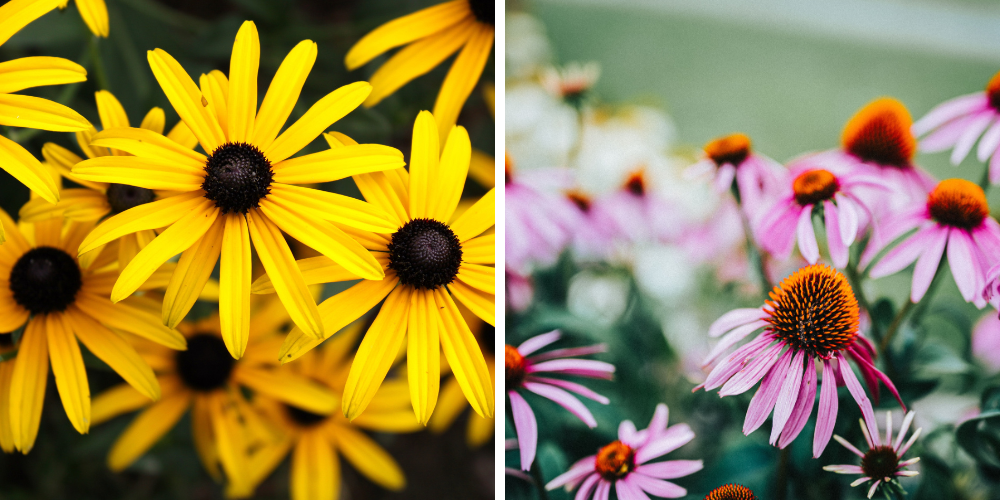
Applying Colour Theory in Garden Design
When looking at your own Edmonton landscape’s design, use these core concepts to colour more consciously:
- Complementary colours, which sit opposite to each other on the colour wheel, create a striking contrast that can make garden features pop. Think purple coneflowers next to yellow black-eyed Susans.
- Analogous colours sit next to each other on the wheel and create a more harmonious and cohesive look when paired together in your landscape. We love blue lupines alongside green hostas and purple alliums.
- Monochromatic schemes use varying shades of a single colour to create a sophisticated and serene garden. We currently love monochromatic schemes featuring various shades of blue with plants like blue flax and Siberian squill.
Our expert designers recommend choosing colours that complement the overall design of your home and landscape. They also emphasize the importance of considering your garden’s purpose and desired mood. For instance, a meditative garden will benefit from cool, calming hues, while a children’s play area needs bright, lively colours to make it more engaging.
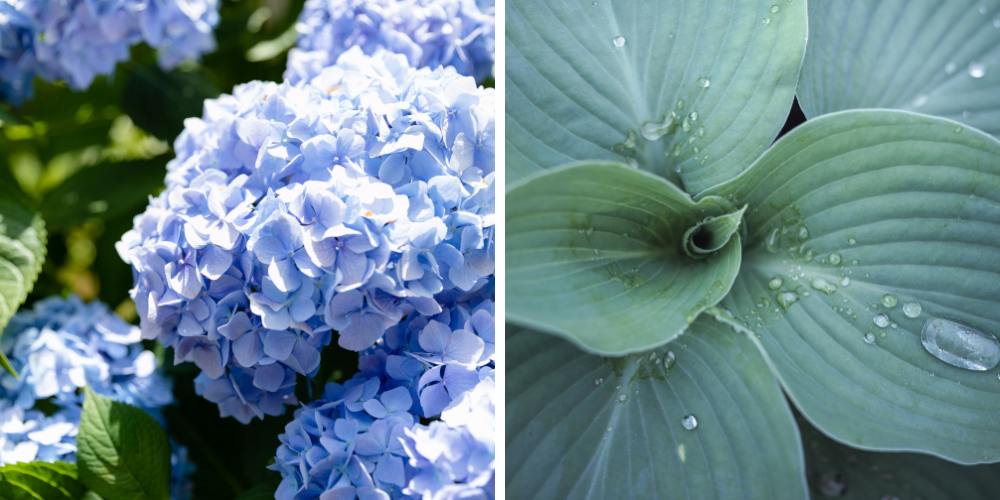
Best Colour Combinations for Gardens
Let’s now explore a few popular colour combination examples and the moods they evoke:
- A garden with calming blues and greens transforms your space into a tranquil retreat. Try blue hydrangeas and green hostas to create a relaxed, serene vibe.
- For an energizing effect, fill your space with a combination of yellows and reds. A border of vibrant red tulips and cheerful yellow daffodils add a burst of energy to your garden in early spring when we need it most!
- To capture that Zen garden feel, use a monochromatic scheme of greens and whites.
- For a vibrant cottage garden, fill it with complementary colours like purple lavender and yellow sunflowers.
- Use blue and purple flowers for a calming effect, incorporating silver foliage to add a touch of elegance. Repetition of groups of elements or colours throughout the space will give you cohesion and balance.
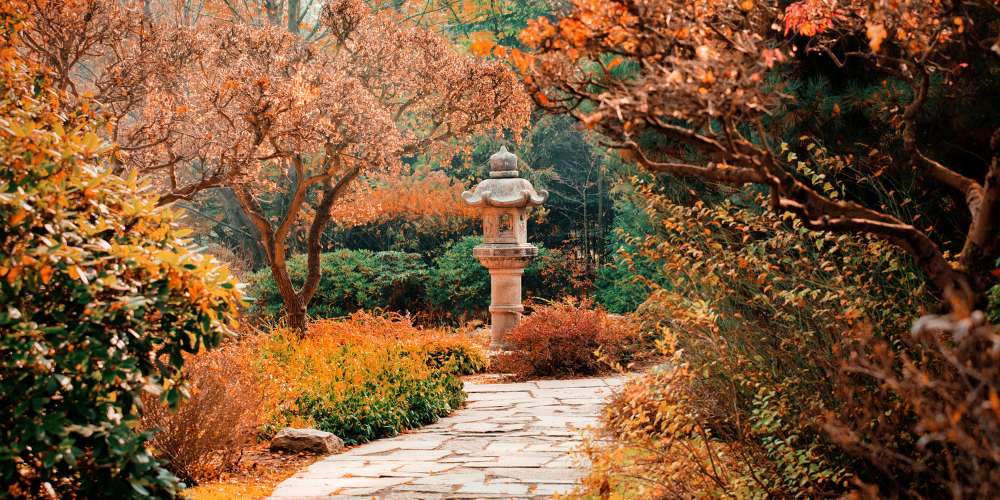
Incorporating Seasonal Changes
Updating your landscape design periodically to complement seasonal changes is a fantastic way to continuously enhance your space and bring out the best of your surroundings. Spring is a beautiful time to explore softer pastels and fresh greens, while summer bursts with bold, bright hues. Autumn colour brings warm oranges, reds, and yellows to your space, while winter surprises with the stark beauty of evergreens and subtle pop of red berries.
To maintain year-round colour harmony, choose an assortment of plants that offer a range of seasonal interests. Spring bulbs like tulips and daffodils, summer perennials like daylilies and coneflowers, autumn foliage plants like maples and sumacs, and winter interest plants like holly and dogwood all contribute to a dynamic and appealing garden year-round.
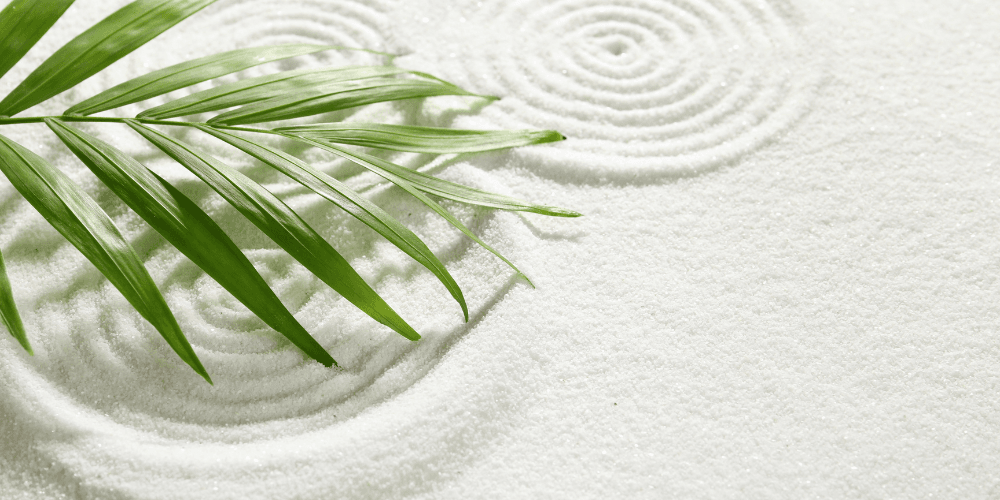
Tips from SL Designers
Professional landscape designers approach colour selection with an eye for balance and harmony, often using a limited palette to avoid overwhelming the senses and carefully considering the interplay of light and shadow throughout the day. Here are some of our top tips for selecting an inviting landscape colour palette:
- Layer colours to create depth and interest.
- Use colour to highlight architectural features, such as turning a plain garden wall into a vibrant focal point by painting it a bold colour.
- Use bold colours sparingly to create focal points without overpowering the overall design.
Understanding and applying the principles of colour theory in your landscape design will instantly transform your garden into a stunning and harmonious space. By thoughtfully choosing and combining colours, you can create an outdoor space that perfectly evokes your desired mood and atmosphere.
At Salisbury Landscaping, making your landscape dreams a reality is our passion, so come see us today and let us help you bring your vision to life! We have the perfect landscape design colour combinations to make your outdoor space shine, no matter the season.

